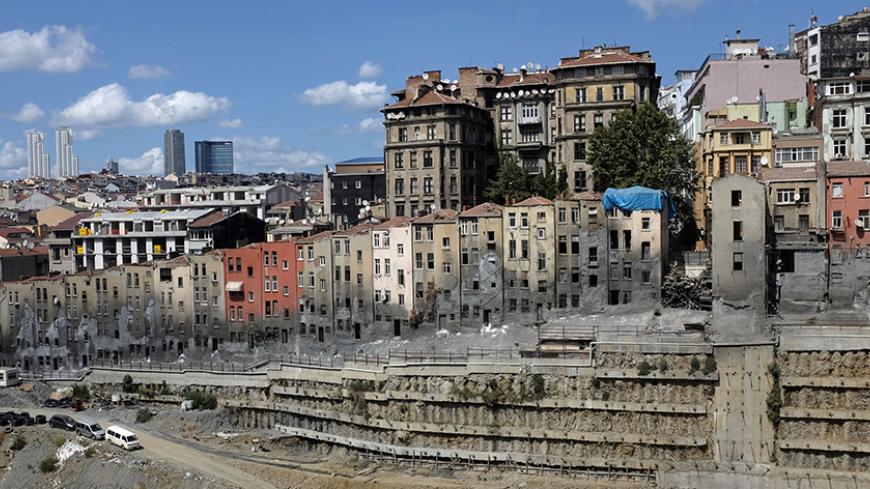Hurriyet daily posted June 30 a story titled “Putting Breaks on Tarlabasi,” announcing that the decision of the Council of State (Danistay, the highest administrative court) on the Urban Transformation Project of Tarlabasi was guilty of “not serving [the] public good” and should be halted. This decision could set a precedent for several other mega urban transformation projects of the Justice and Development Party (AKP) era. Yet on July 2, pro-AKP newspapers published news with the photo of Ahmet Misbah Demircan, mayor of Beyoglu district, denying the news. Demircan told the press, “All court cases against the project have resulted in our favor. The urbanization project of Tarlabasi continues full speed.”
Tarlabasi is located in the center of Istanbul. Being the hub of social and economic life in Istanbul, it was settled by non-Muslims during the Ottoman era. Serving as residences for those who worked in Beyoglu, Tarlabasi was home to Jews, Greeks and Armenians. Most of the buildings date back to the 19th century. Yet the glorious days are gone, along with the non-Muslim population of the district. A series of unfortunate events, such as 1942 wealth tax on non-Muslims, riots against Greek Orthodox citizens that destroyed their businesses and residences in 1955, and legislation requiring the departure of Greeks in 1964 has affected Tarlabasi significantly. These abandoned residences in walking distance to the commercial district provided ample opportunities for inner-city squatting.



